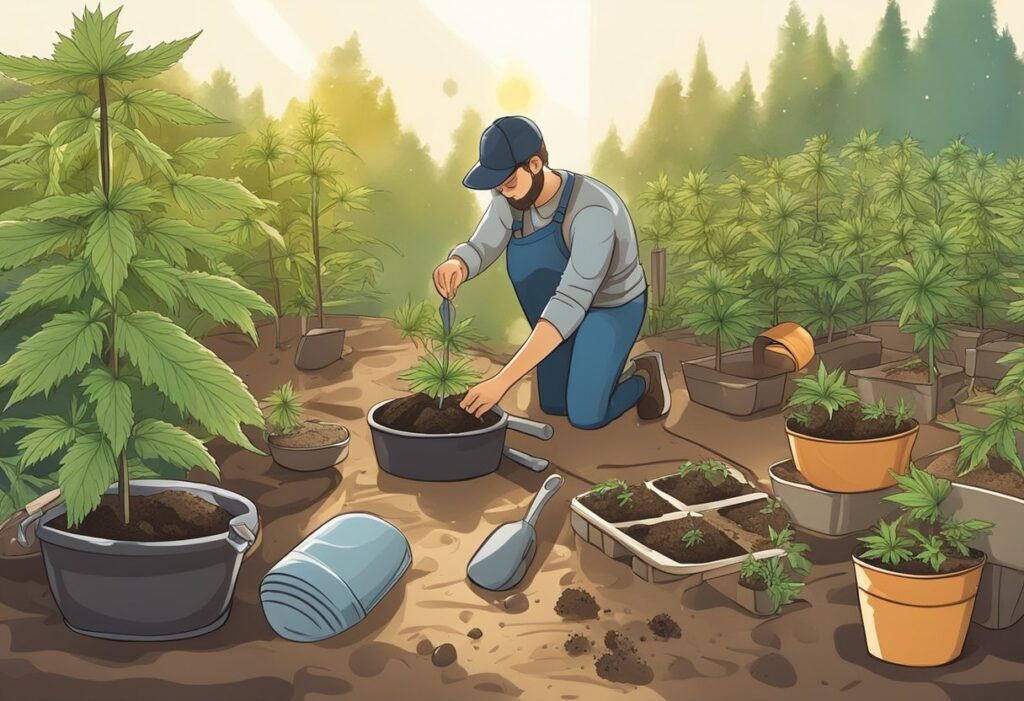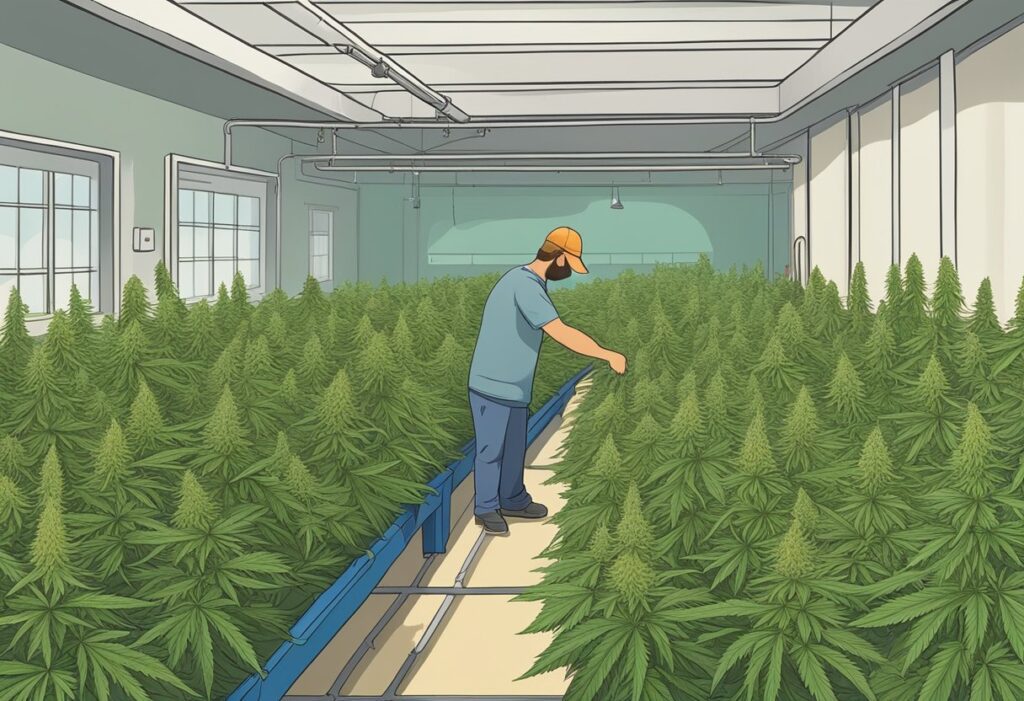
To successfully cultivate organic cannabis in Canada, it’s essential to select the right seed type, ensure optimal soil conditions, and create a conducive environment for seed germination. These initial steps will set the foundation for healthy plant growth.
When looking at cannabis seeds, you have various options, such as regular, feminized, and auto-flowering. Regular seeds produce both male and female plants, whereas feminized seeds are bred to produce only female plants, which are the ones that flower and yield cannabis. It is crucial to choose seeds suited to the Canadian climate and your specific growing conditions.
Your organic soil should be a rich, balanced ecosystem. Aim for a mix that includes components like peat, compost, and perlite, which ensure good drainage and aeration. The soil should be amended with organic material to feed the soil food web, a community of microbes that includes beneficial bacteria and fungi. These microbes break down organic matter to provide essential nutrients like nitrogen (N), phosphorus (P), and potassium (K), crucial for cannabis growth. Maintain a pH balance around 6.0-7.0 to optimize nutrient uptake.
| Nutrient | Importance for Cannabis |
|---|---|
| Nitrogen | Leaf and stem growth |
| Phosphorus | Root and flower development |
| Potassium | Overall plant health |
To germinate marijuana seeds Canada, you need a warm (approximately 22°C), dark, and moist environment. The paper towel method is a simple and effective technique. Place seeds between moist paper towels and then into a dark space. Ensure that the towels remain damp but not soaking. Within a few days, you should see the seeds crack open and a taproot emerge. Once the taproot is a few millimeters long, it’s time to transplant carefully to avoid damage.

When cultivating cannabis in Canada, understanding the distinct growing phases and how to care for your plants during each is crucial. From providing the right nutrients and light during the vegetative stage to observing and adjusting care in the flowering stage, each phase demands specific attention. Managing pests with organic remedies is also integral for a healthy harvest.
During the vegetative stage, your cannabis plants require ample light and water to establish a solid foundation for growth. For indoor setups, aim for 18-24 hours of light daily. Outdoor plants will naturally follow the sun’s cycle. This is the time to employ training techniques like pruning to shape your plants and encourage a more robust yield.
Once your plants enter the flowering phase, light schedules should shift to 12 hours on and 12 hours off to simulate the shorter days of fall. This is also the time to observe your plants for sex, removing males to prevent pollination of females if seedless bud is your goal.
Pests can sabotage a crop if not managed properly. Prevention is key, and introducing beneficial insects like ladybugs can help combat aphids and mites.
Monitor your plants closely for signs of pests and address any infestations immediately with organic solutions to maintain the integrity of your organic cannabis garden.

Excellence in the harvesting, drying, and curing processes is crucial for high-quality organic cannabis. Correct timing can significantly enhance the flavors, terpenes, and potency of your cannabis flowers.
To ensure you harvest at the optimal moment for higher yields and more potent buds, closely monitor your plant’s trichomes and pistils. Trichomes should change from clear to a milky white color, with some turning amber, indicating peak potency. Pistils should darken and curl, confirming readiness.
Harvesting: Cut your plants at the stem, trimming away any unwanted leaves, and preserving the essential flowers.
Drying:
Curing:
For optimal growth, your outdoor soil should be rich in organic matter, with a balanced pH level around 6–6.5. Incorporating compost, manure, or a humus layer fosters a healthy microbial ecosystem, which is critical for organic cannabis plants.
Organic fertilizers such as bat guano, worm castings, and bone meal gradually release nutrients and increase bud size. They help stimulate plant growth by improving soil structure and fertility.
During the vegetative stage, ensure consistent light exposure and maintain nutrient levels with nitrogen-rich organic matter. As the plant enters the blooming stage, switch to phosphorus and potassium-rich fertilizers to support bud formation and growth.
An optimal indoor setup includes ample lighting (LEDs or full-spectrum lights), consistent temperature control (ideally 20–25°C), and proper ventilation. Use organic soil with a good drainage system and avoid synthetic pesticides.
Top-dress your soil with organic plant foods like fish meal, alfalfa meal, or kelp meal. Using compost teas as a foliar spray can also enhance nutrient uptake and yield.


WE ARE EVERY GROWERS ONE STOP SHOP TO ACQUIRE PREMIUM CANNABIS SEEDS FOR SALE IN THE USA, CANADA AND AUSTRALIA
Farmers Lab Seeds 2024,
All Right Reserved
Seeds are sold as novelty items, souvenirs, and collectibles. They contain 0% THC. We encourage our customers to check the legislation in their Country, State, Province, and Municipality prior to purchasing items from our store. We do not provide growing information.
All seeds are sold as hemp, and lab tested under 0.3% THC. This product is not for use by or sale to persons under the age of 21. This product should be used only as directed on the label. It should not be used if you are pregnant or nursing. Consult with a physician before use if you have a serious medical condition or use prescription medications. A Doctor’s advice should be sought before using this and any supplemental dietary product. All trademarks and copyrights are property of their respective owners and are not affiliated with nor do they endorse this product.
These statements have not been evaluated by the FDA. This product is not intended to diagnose, treat, cure or prevent any disease. Individual weight loss results will vary. By using this site, you agree to follow the Privacy Policy and all Terms & Conditions printed on this site. Void Where Prohibited by Law.